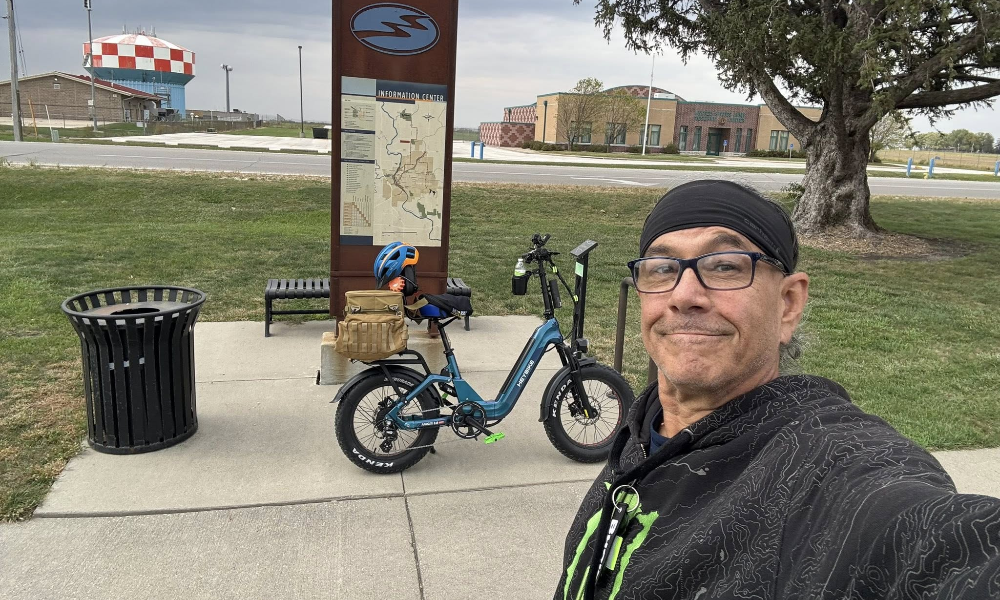Long-range electric bikes are meant to cover longer distances. With the latest technology and battery capacity, these e-bikes typically travel up to 100km on a single charge. Whether you ride to work in a bustling city, or simply enjoy cruising the countryside, these high-range electric bikes will take you there. Range numbers can be different about speed, weight, terrain, weather conditions, and cycling mode.
This article will provide valuable details regarding your long-range electric bike, whether you are a newbie or have just tackled the world of electric bikes.

Components of a Long-Range Electric Bike
It is what you should know about the components of your e-bike.
Electric Motor
The electric motor is the key component of your e-bike. It propels your bike with minimum effort. The motor operates by increasing the force you put in when pedaling. It means that you can ride for longer distances without getting tired. An e-bike with an all-terrain fat tire can even assist in overcoming steep slopes.
Battery
The battery in the e-bike stores and provides electrical energy to the motor. It is the energy that drives you forward. If you ride your bike for a long time, then make sure to charge the battery completely. When your battery is fully charged, you can ride a larger area without dealing with power loss.
Controller
The controller plays the role of the brain of your electric bicycle. It controls and monitors the power flow from your battery to the motor. You can also tweak your riding by changing your speed limit and power assistance level on the controller. Furthermore, before using your electric bikes on a main road, practice changing from one power mode to the other in an area that is not so busy.
Sensing Systems
As a safety measure, US law requires that the class 3 e-bikes are limited to a maximum speed of 28 mph. Long-range electric bicycles have sensing systems that meet such necessities. The three main types of sensors in electric bikes are:
- Speed Sensor: This sensor measures your bike speed and shows how fast you are riding.
- Torque Sensor: This way, it measures the power and pressure you apply to the pedals, then modifies assistance levels for a smoother riding experience.
- Pedal Assist Sensor: This sensor senses your pedal movement and then sends a signal to your control panel on the power pedestrians require. It helps to ensure that the motor turns on every time you pedal and shuts off once you stop pedaling.
These systems work together to ensure that your riding is smooth and secure.
Range Monitoring and Management
For an e-bike rider, being aware of the range of his battery-powered bike is very helpful. It helps to avoid any inconvenience, especially when traveling long distances.
Battery Range Indicators and Displays
Battery range indicators and displays on your e-bike enable you to monitor the power left in your battery. The indicator is likely to be on a monitor mounted alongside the handlebar. The screen will have a battery icon like a fuel gauge for a car, which will show your present charge level and other energy consumption data. Other e-bikes have displays with more details, such as speed tracking, electric bike distance, and power assist levels.
Estimating the Remaining Range
To calculate this, first determine the capacity of your battery, which is in watt-hours. Now, take your current battery capacity and divide it by the average power consumption of your bike.
Here's the formula: Remaining Range = Battery Capacity / Power Consumption.
Even though this approach works well, terrain and weather conditions may also affect how much range you have left.
The Advanced Battery Technology of Long-Range Electric Bikes
The technology that makes e-bikes fast and efficient.
Lithium-ion Batteries
Before lithium-ion batteries, e-bikes had sealed lead-acid batteries. These batteries are the best choice for electric bicycles because of the following reasons:
- High Energy Density: A lithium-ion battery allows you to ride longer without continually charging your bicycle.
- Lightweight: Lithium-ion batteries are light, and electric bikes with these batteries are more comfortable to use.
- Fast Charging: These batteries charge fast.
- Long Lifespan: Your lithium-ion battery will serve you for several years if properly maintained.
Larger Battery Capacities
One of the most crucial features of electric bicycles is battery capacity since it directly determines the range and battery life of the bike. The capacity of a battery depends on the maximum distance an e-bike can cover after a single charge. The higher the battery capacity, the greater the range, distance, and time an e-bike can be used. The riders can travel longer distances and enjoy a better riding feeling without running out of power.
The shelf life of a battery is also directly influenced by its capacity. The service life of the battery is the number of years that a battery will operate actively without a significant reduction in capacity.
As a result, once the battery capacity drops to a certain level, the duration of use will also drop, leading to increased replacement frequencies. Riders can help increase the service life of batteries, reduce replacement frequency, and ultimately lower costs on e-bike riding over time by opting for the right battery capacity.
Battery Management Systems (BMS)
A BMS is a device that regulates the efficiency of your e-bike's battery. These systems track your battery's current, voltage, and temperature. The BMS also protects your battery from overcharging and overheating. It saves the battery from damage and makes it long-lasting for many years.
Regenerative Braking
On most electric bikes, regenerative braking is an impressive feature. Unlike the expected situations where you only slow down when using brakes, the energy that results from braking is converted to electrical power and stored in your bicycle. This energy is stored, which can help extend the range of your battery or give more power to your motor. It also assists in reducing the stress on your conventional electric bike brakes.
FAQ
How far can long-range electric bikes travel on a full charge?
The distance that a long-range e-bike can travel depends on the battery capacity, terrain, rider weight, and assist level, among other factors. Nevertheless, these e-bikes have 50–100 miles per charge, suitable for longer trips or rides.
What is a good-size battery for an e-bike?
The size of e-bike batteries is specific to the brand and type of bike, ranging from 200W to 700W. Most of the time, a 400-watt battery in an e-bike will offer a range of 35 miles, whereas, with the help of a 750-watt battery, you can have up to 65 miles for flat routes with low motor assistance.
Summing
Electric bikes with long-range power capacity are a new and exciting advancement in electric bikes. By incorporating highly complex technology and systems with a conventional and standard bicycle design they offer cyclists a means of transport that will be environmentally friendly, convenient, and easy to use.
The electric motor, battery, controller, and sensing components are the most crucial mechanisms that enable the electric bike to operate. Long-distance electric bikes, as the name suggests, are the electric bikes of choice for those who wish to travel long distances, and the battery technology used is also highly advanced, allowing these bikes to travel such long and impressive distances without significantly affecting the battery and requiring only a single charge.



Share:
E-bike vs. Car: Which One Should You Choose?
Electric Bike: The Best Valentine's Day Gift for Your Loved One